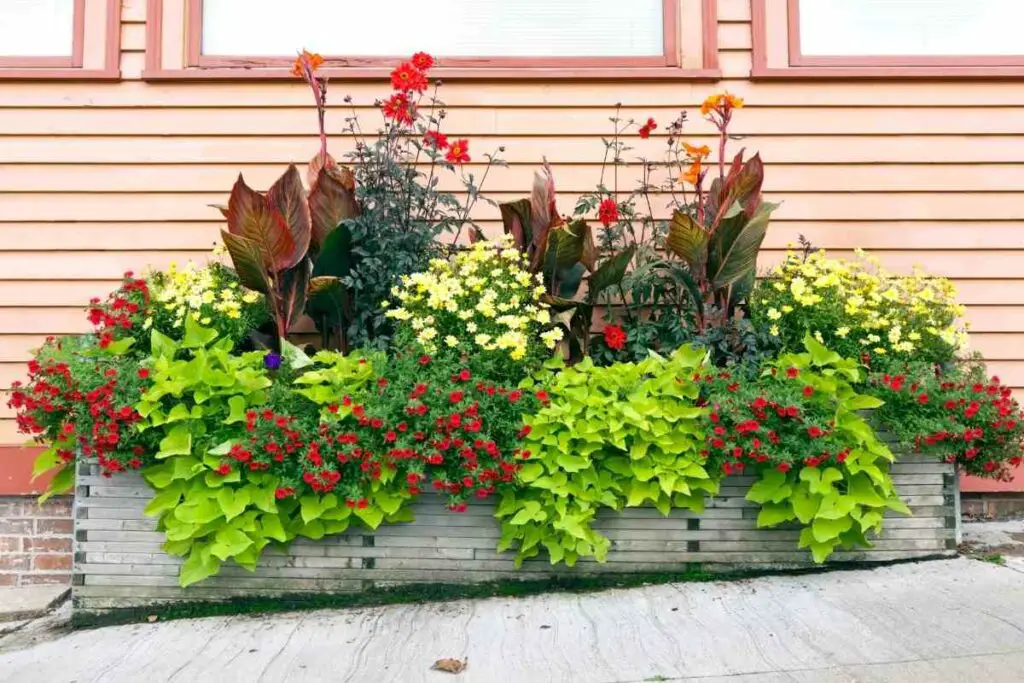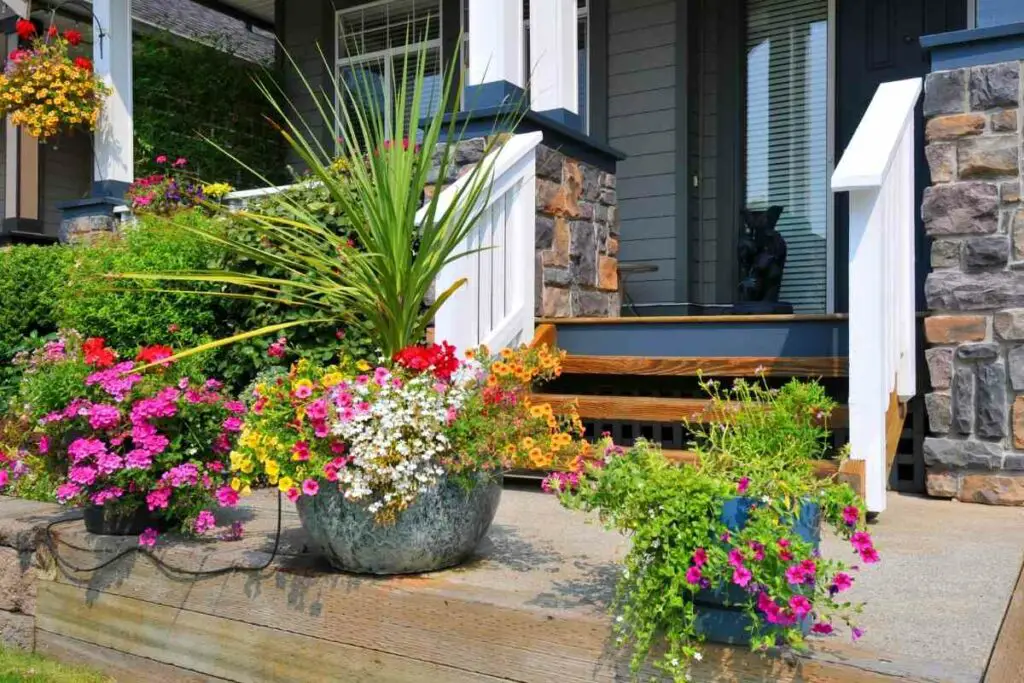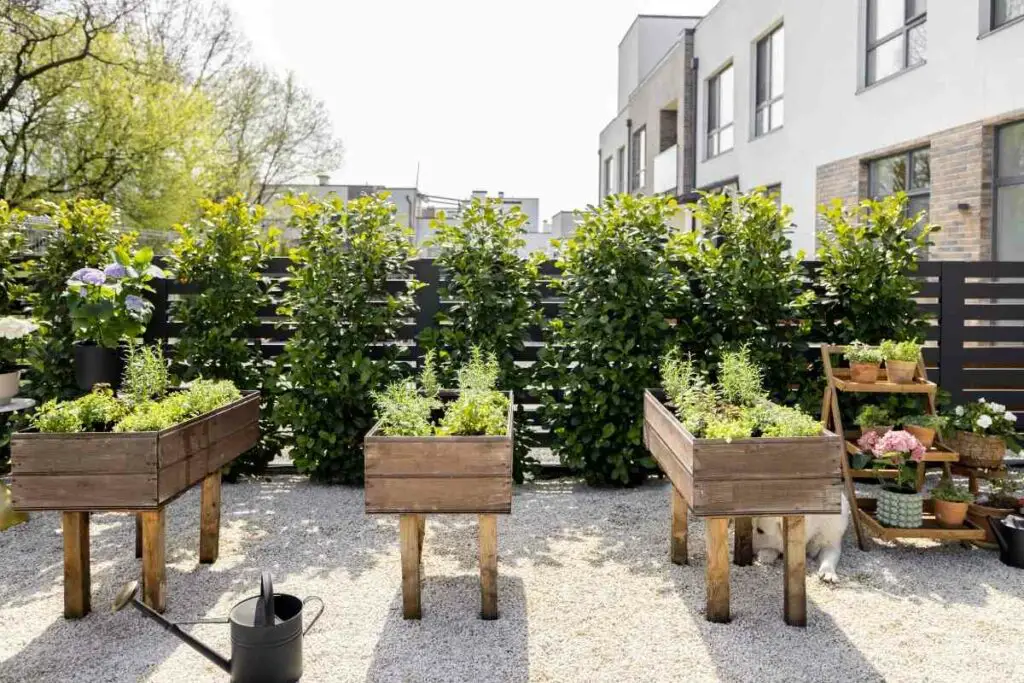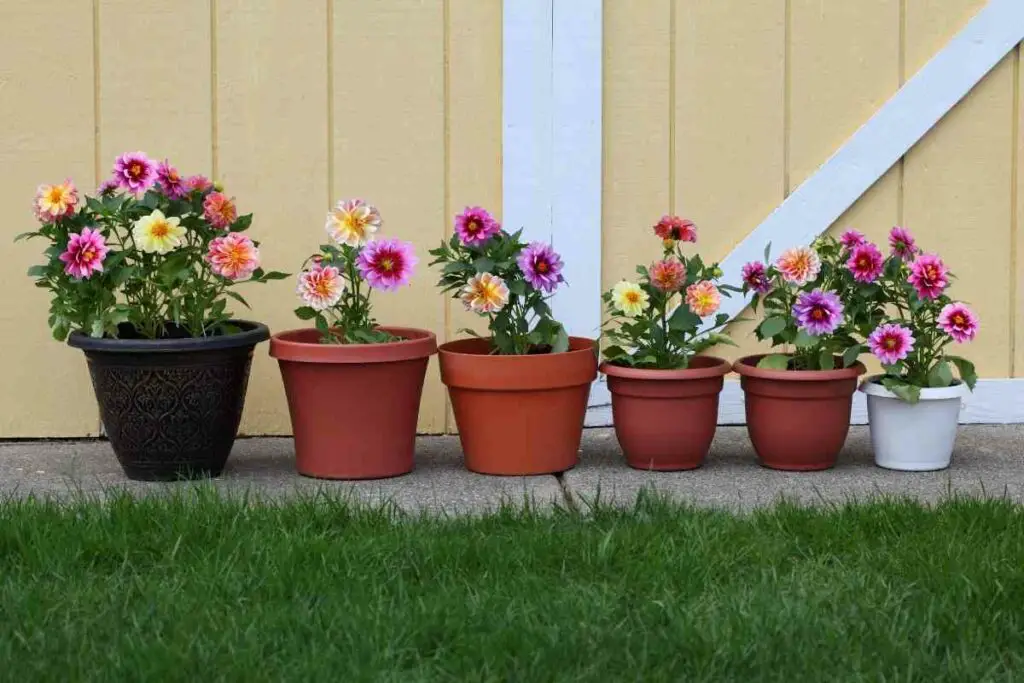Looking to add a splash of color to your patio this spring?
Why not try lining your planters with some vibrant fabric?
In this blog post, we will discuss 8 types of fabric that are perfect for lining planters.

We will also provide tips on how to choose the right type of fabric for your needs.
So read on to learn more.
How to Choose the Best Planter Liners
It can be difficult to choose between the many types of planter liners.
Here are some tips to help you make the best choice for your needs.
Consider the type of plant you will be growing
Some plants require more drainage than others. If you are growing a plant that requires a lot of drainage, you will need to choose a liner that will easily allow water to pass through.
Think about the climate you live in
If you live in an area with a lot of humidity, you will need to choose a liner that is resistant to mold and mildew.

Choose a fabric that is durable
You want your planter liner to last for many seasons. So make sure to choose a fabric that is made from high-quality materials. You don’t want to have to replace your liner every few months.
The type of planters you have
Note that you must use a liner if your planter is made of metal or wood.

But still, there are a variety of liner materials to choose from, so take your time in selecting the best one for your needs.
Now that you know how to choose the best liner for your needs, let’s take a look at 8 types of fabric that are perfect for lining planters.
8 Best Planter Liners to Buy
Here are our top picks for the best planter liners.
1. Plastic Pots
Plastic pots are a great option for lining planters.
They are durable and last long. Also, they come in a variety of colors and sizes to choose from. You can use a plastic pot with a wooden or wireframe planter.
You can remove the plastic pot when, say, you want to water the plants or if the pot gets too dirty and then return it back to the planter.
Pros
- Plastic pots are convenient
- Easy to use
- Available in a wide range of colors and sizes
- Do not allow any dirt out
Cons
- Plastic pots can get brittle over time and may crack
- Poor drainage
- Not great for the enviroment
If you use a plastic pot properly, your planter will look great for years.
2. Coconut Fiber
Coconut fiber is a natural fiber that is perfect for lining planters.
It is absorbent and thus helps to keep the roots of your plants moist.
Coconut fiber is also known as coir. It is made from the husks of coconuts and is 100% biodegradable.
Pros
- Made from natural materials
- Keeps roots moist
- Available in different sizes
- Looks attractive
Cons
- Tend to be more expensive than other options
- Bought in specialty stores
Coconut fiber liners are available in a variety of sizes. You can use them with metal or wireframe planters.
3. Plastic Sheeting
This is one of the most common types of liners used for planters.
It is made from thin plastic and is available in rolls. You can cut it to size according to your needs. Plastic sheeting is perfect for lining wireframe or wooden planters.
Note that you can use any plastic sheeting available in your home as a liner.
Just make sure to create some drainage holes in it so that water can pass through. Most plant roots will rot if they are left in standing water.
Pros
- Plastic sheeting is cheap and easily available
- It is easy to cut to size
- Very durable
Cons
- Does not look very attractive
- Poor drainage when there are no drainage holes
- Made from synthetic materials
Plastic sheeting liners can be used with metal, wireframe, and wooden planters.
4. Fiberglass
Fiberglass is a type of liner that is made from glass fibers. It is very strong and durable.
Fiberglass liners are available in a variety of colors and sizes. You can use them with metal, wooden or wireframe planters.
Fiberglass creates a very nice finish that will make your planter look great.
Pros
- Fiberglass is very strong and durable
- It creates a nice finish
- Available in a variety of colors and sizes
Cons
- Can be dangerous to work with
- More expensive than other options
- Installation can be difficult for some people
However, it can be a bit dangerous especially when installing. If inhaled or ingested, the glass fibers can be harmful.
5. Sphagnum Moss
While it is not very commonly used, sphagnum moss is a great option for lining planters.
It is a type of moss that is found in bogs and swamps. Sphagnum moss is very absorbent and thus helps to keep the roots of your plants moist.
Sphagnum moss will be a good option if you are looking for something natural.
Pros
- Keeps roots moist
- Attractive looking
- Good drainage
- Natural
Cons
- May be more expensive
- May not be sustainable
It is also environmentally friendly as it is 100% biodegradable. You can use it with metal and wireframe planters.
6. Resin
Odd as it may seem, you can use resin to line your planters.
It is very strong and durable. You can make a resin planter line yourself at home.
All you need to do is dip a cloth in resin and then line your planter with it.
Pros
- Very strong and durable
- Can be made at home
- Inexpensive
- Easy to use
Cons
- May not look very attractive
As the cloth dries up, the resin creates a strong sealed layer that is going to protect your planter. You can use it with any type of planter.
7. Varnish
If you want something simpler yet effective, you can use varnish.
It is best used with wooden planters. All you need to do is apply a layer of varnish on the inside of your planter and allow it to dry.
The varnish will create a waterproof barrier that will protect your planter. It is also going to make it look more attractive.
Pros
- Gives a nice finish
- It is easy to use
- Inexpensive
Cons
- May not be very durable
- Applying too many coats can make the planter look tacky
You can use any type of varnish that you like and apply as many coats as you want.
8. Burlap
Burlap is a popular choice for lining planters because it is inexpensive and provides good drainage.
It is also a natural fiber, so it will break down over time and add nutrients to the soil.
Just make sure to choose a burlap that is treated to resist mold and mildew.
Pros
- Inexpensive
- Good drainage
- Natural fiber
Cons
- Not very strong or durable
- May not look very attractive
You can use burlap with metal, wireframe, and wooden planters.
Why Should I Line my Planters?
There are a few reasons why lining your planters is a good idea.
Lining planters increase durability
You don’t want to keep buying new planters every year because they’ve rotted or cracked. Lining your planters will increase their durability and help them last longer.
Improves plant health
One of the most significant advantages of planter liners is keeping the right amount of moisture in the soil. This is vital for plant health as too much or too little water can harm them.
Lining planters also help to prevent root rot by providing drainage. Root rot is a serious problem that can kill your plants.
Aesthetics
Planter liners can also make your planters look more attractive. They come in a variety of colors, textures, and materials. You can find one that matches the style of your home or garden.
Best Planter Liners: FAQs

What is the best planter liner to use?
Your choice of planter liners will depend on your needs. If you are looking for something durable and long-lasting, then plastic sheeting or plastic pots would be good options.
If you want something that is inexpensive and provides good drainage, then burlap would be a good choice. Sphagnum moss is also a good option if you are looking for something natural.
Should I line my concrete planter?
Concrete and ceramic planters don’t need to be lined as they are durable and porous. They easily allow water to pass through, so there is no need to worry about drainage.
What is the best way to line a planter?
The best way to line a planter will depend on the type of liner you are using. If you are using plastic sheeting, then you can just cut it to size, place it inside the planter, and glue or staple it in place.
Other liners may need more time but they usually come with instructions on how to install them.
Can I use a trash bag as a planter liner?
Yes, you can use a trash bag as a planter liner. Just make sure to poke holes in the bottom for drainage. You can also use garbage bags to line hanging baskets.
Can I use landscape fabric as a planter liner?
Landscape fabric makes an excellent liner for planters as it is durable and porous. It allows water to pass through while preventing roots from escaping. Just make sure to cut slits in the fabric for drainage.
Final Thoughts
Lining your planters is a good way to increase their durability and improve plant health.
It is also an inexpensive way to make your planters look more attractive. Choose from the planter liner options above to find the best one for your needs.